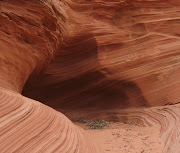 It is the reoccurring improbable dream of every treasure seeker. An abundance of rubies, sapphires, rare marble and intricate blown glass, ready and ripe for the taking with just one impossible catch. Nothing and no one has ever been able to get close enough to survive or escape the event horizon of a black hole in space. Space winds around black holes produce and polish cosmic duct into a wealth of jewels, precious minerals and metals with the grainy ingredients of Life, only to be sucked into the black hole. Certain locations in space mass manufacture these jewels. The process happens in exuberant youthful galaxies struggling to emerge into maturity, called quasars. It gives the scientists pause to look at the vanishing and reappearance of the shimmering colorful jewels in space before they are repossessed by the black hole pirates. (Reuters photo from Hubble)
It is the reoccurring improbable dream of every treasure seeker. An abundance of rubies, sapphires, rare marble and intricate blown glass, ready and ripe for the taking with just one impossible catch. Nothing and no one has ever been able to get close enough to survive or escape the event horizon of a black hole in space. Space winds around black holes produce and polish cosmic duct into a wealth of jewels, precious minerals and metals with the grainy ingredients of Life, only to be sucked into the black hole. Certain locations in space mass manufacture these jewels. The process happens in exuberant youthful galaxies struggling to emerge into maturity, called quasars. It gives the scientists pause to look at the vanishing and reappearance of the shimmering colorful jewels in space before they are repossessed by the black hole pirates. (Reuters photo from Hubble)A new study is looking at the significance of cosmic dust and its implications in our origins. A working theory is that we each have literally a bit of star dust in us. Stars reach the end of their lives and burst spraying bits of dust throughout the universe, true supernova events that may answer questions as to the physical origins of Life. The spiritual quest is of a different matter.The space dust in our corner of the universe is thought to have been created when ancient stars resembling massive versions of our sun exploded as supernovas at the ends of their lives. But when the universe was new, sun-like stars hadn't been around long enough to die and make dust. So where did the dust needed to make those stars come from?
but the resulting most active, black holes budding galaxies known, where gravity lures material inOne idea is that the dust came from quasars, which are supermassive black holes surrounded by dusty, doughnut-shaped clouds and lots of radiation. They are the pressure blows material
away on a constant cosmic tug-of-war that results in high rates of star formation and the creation of
new elements.
"Quasars are like the Cookie Monster," said study team member Sarah Gallagher of the
University of California, Los Angeles. "They can consume less matter than they can spit out in the form of winds."
Astronomers figure that the planets that formed in the past several billion years — and those away from quasars — came from dust that was belched from dying stars. That's what happened with Earth.
That still leaves a question about where the dust from the first couple billion years of the universe came from, which helped form early
generations of star systems.
"It's formed in the wind," of the black holes, Markwick-Kemper said. Gas molecules collide in the searing heat of the quasar, which is thousands of degrees Fahrenheit, and form clusters.
"These clusters grow bigger and bigger until you can call them dust grains," she said.
Bob Dylan aside, the dust of the universe is in and of the universe. I will have a mite more reverence for the fine stuff as I dust my bookcases tomorrow, after my birthday. Ha! Nothing and no one is dust free anymore.
Something you may wish to add to your bookshelves is the outstanding Vital Dust: Life As A Cosmic Imperative from the illustrious Nobel Prize winner Christian De Duve.











No comments:
Post a Comment